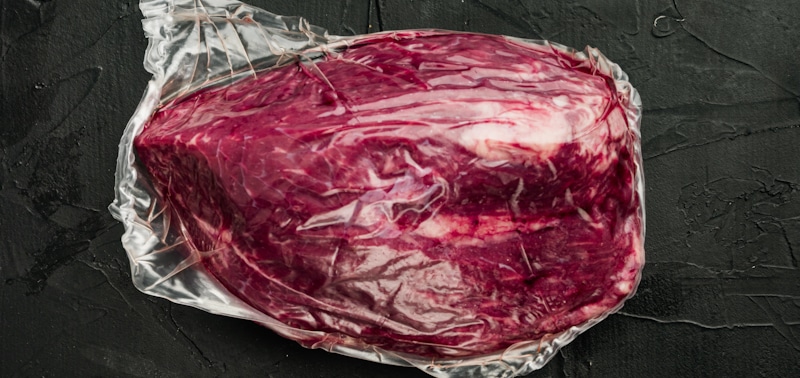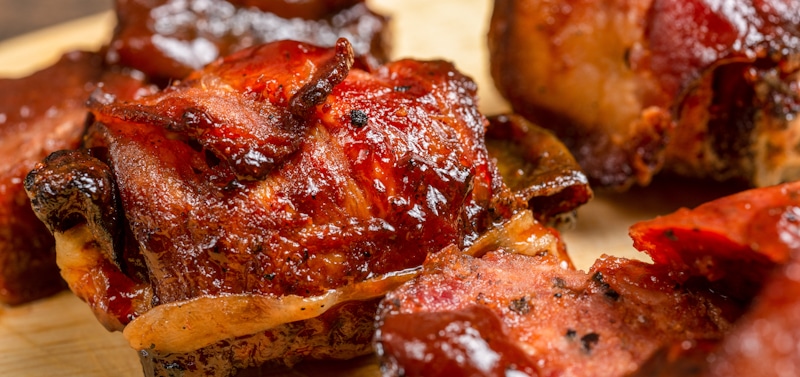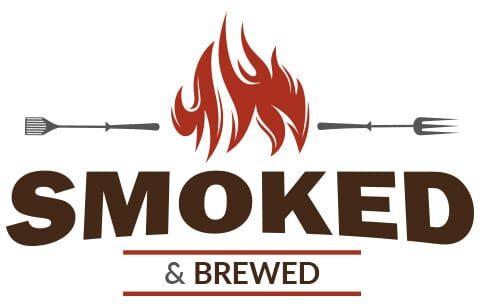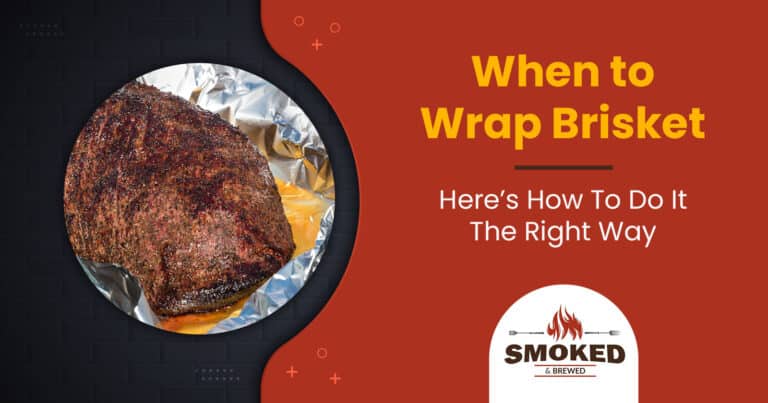The question of when to wrap brisket is a passionate discussion in the BBQ community. Some people idolize the technique and the superiority of the results. Others favor leaving the brisket naked before the cooking time.
The ideal time to wrap brisket is at the 150-160 degree mark. At that stage, the beef should be reaching “the stall” so that we can slow down the cooking method for a short period. Wrapping the meat during this time can help speed things up.
If you choose to take that option, it’s essential to do it properly. In our guide, we’ll discuss when to wrap brisket, what material to utilize, and other guidelines to aid you in perfecting your cooking technique.
 Do I Have To Wrap Brisket?
Do I Have To Wrap Brisket?
Is it essential to wrap the brisket in terms of practicality? That’s an issue of individual partiality. Ultimately, it all relies on two aspects: time and consistency. Wrapping a brisket can aid in shortening the cooking period by pushing it through the phase known as “the stall.” If you wish for the beef to cook more rapidly, you need to consider taking the time to wrap it.
Then again, wrapped meat inclines to have a softer chew than the bare kind. You have to worry about the wrapper steaming the beef inside with aluminum foil. That’s why fans of the firm, chewy bites usually let the meat cook without using a wrapper.
When To Wrap Brisket For Ideal Results
So, what’s the ideal time to wrap a brisket? Our suggestion would be to cover it at the start of the stall. That’s the point when you see that the readings on your thermometer don’t seem to be moving. Generally, around 150 degrees, take the meat off the flame to wrap it at that stage.
The brisket might also start to stall before the 150-degree mark. In that situation, it’s ideal to wrap it despite the plan, specifically if the temp is staying steady under 140 degrees. Let’s say that the beef is at 40 to 140 degrees for more than four hours. This temp range is the ideal breeding ground for bacteria that result in foodborne illnesses
As a general rule, wrap the meat when it starts to stall or reaches 150 degrees. Even if you don’t get the plateau soon enough, you can still save time by wrapping the brisket beforehand.
What About Adding Liquid When You Wrap Brisket?
Though it’s not always essential, adding a minute amount of liquid while wrapping your brisket is all right. Water, apple cider, alcohol, stock, broth, and white vinegar are worthwhile options. If you choose to add liquid, avoid a heavy hand. Use a spray bottle to coat your meat thinly.
Otherwise, you can use around three to four ounces of liquid on your wrapping material before placing the brisket. That method works well when using aluminum foil as the wrapper since it locks moisture internally.
[amalinkspro_table id=”916″ new-window=”on” nofollow=”on” addtocart=”off” /]
So, What Is The Stall?
People use the Texas crutch multiple times to delay or altogether avoid the stall. This stall is a frustrating but renowned phase when the meat temperature stalls for a significant period. It happens most commonly at or near the 150-degree temperature level. It can still occur at other points throughout the cooking, occasionally more than once.
The stall occurs because of evaporative cooling. As the meat smokes, the moisture escapes. That water evaporates from the exterior, cooling the brisket somewhat. At a specific point, the grill’s warmth is not sufficient to fight against this cooling effect, so the temp reaches the annoying stall.
In due course, the extra water in the beef can evaporate, and the meat temper can start to rise once again. In the interim, though, there can be a long wait. That’s what makes many people use the Texas crutch.
When To Wrap Brisket – Before Or After The Stall?
There isn’t a specific answer to that query. It’s one issue that pitmasters repeatedly bring up, so it doesn’t completely die down. We also know that not all pitmasters wish to wrap their brisket. The ones who do can’t appear to decide when to do it. Because each method offers varying results, it’s challenging to determine which one is ideal.
Wrapping your brisket too soon can rob it of that delicious smoky taste that any good BBQ needs. We reason it’s ideal to wait for only three hours before you wrap the brisket. It perhaps takes in enough smoke to have an apparent variance in terms of flavor at that stage.
Our recommendation would be to wrap the brisket as soon as it reaches the average stall temperature of 150 to 160 degrees. You do not have to keep guessing when the stall may happen. As soon as it’s in the wrapper, it can power through “the stall” swiftly.
A word of caution: If you like a thick, mahogany-colored bark, you need to hold off on wrapping till the brisket attains an internal temperature of 170 degrees. That can probably happen after the stall so that you could be in for a long wait.
The Point Or The Flat – What Should I Wrap?
If you’re cooking an entire brisket, you may be considering whether you should separate the point and the flat before wrapping anything. It’s good to know that you don’t need to do that. Though the brisket’s flat end can finish smoking before its point, both portions have to remain in their wrapper till they arrive at the 195-degree level.
Even if you cook the two portions separately, you can’t distinguish the best time to remove the meat for wrapping. In both situations, you can do the wrapping according to your penchant. Ultimately, we believe the 150–160-degree range is ideal for both parents.
Suppose you wrap the point or flat portion individually. In that case, you don’t need as much material as you use for a whole packer. So, you might have to take the point portion out of the wrapping a little earlier if you plan on having burnt ends. To get such a delicacy, pause until the flat part of the beef reaches 195 degrees. Then you detach the point and the flat to cut the end cubically.
Place the cubes back in the cooker for an additional hour while resting the flat. If the flat portion isn’t fork-tender soon enough, place it back on the grill grate. Once the point position is crispy, take the cubes off the flame and serve with BBQ sauce. After you smoke the flat portion, let it rest for around 30 minutes in wrapping before slicing the brisket.
 Freezer Paper And Wrapping Brisket
Freezer Paper And Wrapping Brisket
Most people use aluminum, parchment, or butcher paper for wrapping brisket. Then there’s freezer paper, an abundant, waterproof paper with wax coating on either side. When keeping your brisket, it’s OK to use freezer paper as a substitute for parchment or butcher paper. However, it would be best if you didn’t use it as an alternative when cooking the brisket.
That’s because freezer paper has a poly coating to avoid ice crystals from covering the food. Ultimately, the piece isn’t heat resistant. If you put the skin to the flame, you could melt the surface of the brisket, which can end up in chaos.
Final Thoughts
The brisket-wrapping conversation can endure as soon as people swarm around the BBQ. At the same time, we favor leaving the brisket bare while allowing the smoker to opt for smoking. In all these scenarios, it’s great that most pitmasters can rely on the Texas crutch method.
You can try out butcher or parchment paper rather than foil if you learn when to wrap brisket. You put in a small amount of effort and an excellent brisket with distinctive taste and texture. Good luck grilling!
Scot has loved smoking food in his free time for the last few years. Each major holiday or off-weekend, Scot spends days testing and prepping new recipes for perfection.

